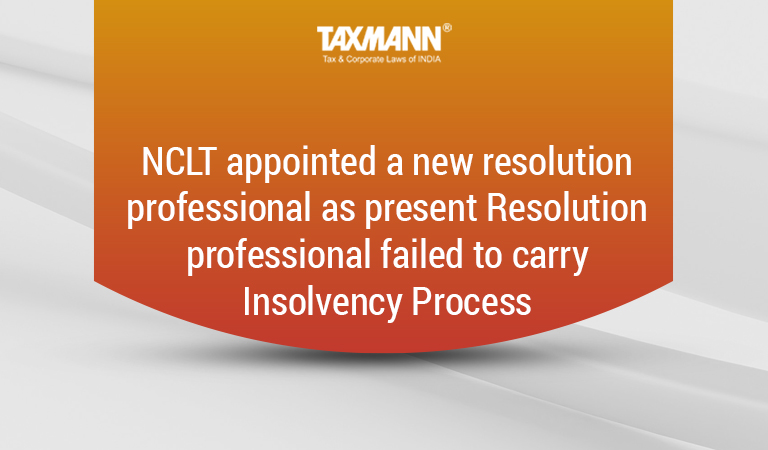NCLT appointed a new resolution professional as present Resolution professional failed to carry Insolvency Process
- Blog|News|Insolvency and Bankruptcy Code|
- 2 Min Read
- By Taxmann
- |
- Last Updated on 23 August, 2021
Case details: Ram Niwas & Sons v. Palm Developers (P.) Ltd. - [2021] 129 taxmann.com 181 (NCLT - New Delhi)
Judiciary and Counsel Details
-
- Abni Ranjan Kumar Sinha, Judicial Member and L.N. Gupta, Technical Member.
- Abhishek Kumar, Adv. for the Applicant.
- Barun Kumar Sinha, Adv. for the Respondent.
Facts of the Case
In the instant case, the Adjudicating Authority had initiated the Corporate Insolvency Resolution Process (CIRP) against the corporate debtor and appointed the one ‘MKS’ as Interim Resolution Process (IRP) of the corporate debtor.
The main grievance of the Applicant/IBBI was that said IRP had neither made efforts in managing the operations of the corporate debtor as a going concern nor performed the duties cast upon him under the Code to complete the CIRP, nor complied with the directions of the Adjudicating Authority.
NCLT Held
The NCLT, Delhi Bench found that IRP had not been able to give any cogent reasons for not being able to carry forward the CIRP and as to why no meeting of CoC with Financial Creditors could be convened. In addition, the CIRP is a time-bound process involving certain common steps those need to be performed by every IRP/RP like Appointment of valuers, Evaluating and placing Resolution Plan before CoC, etc. and for performing such mandated tasks, the CoC must be in operation. The non-performance of the aforesaid steps within the prescribed timelines will make the entire CIR Process infructuous, which will drive the corporate debtor into Liquidation eventually.
Given the above and in an extraordinary situation, the IRP had neither conducted any meeting of CoC nor taken concrete steps for carrying forward the CIR Process under the provisions of the IBC through a period of 309 days have elapsed in the meantime against the statutory initial timeline of 180 days, this a case of abuse of the process of the IBC/Tribunal.
In order to protect the interest of the corporate debtor and its stakeholders, and for the furtherance of the CIR Process, ‘MKS’ was to be replaced and a new IRP was to be appointed. Accordingly, show cause notice was to be issued to ‘MKS’ as to why the contempt proceedings would not be initiated against him.
List of Cases Referred to
-
- Gujarat Urja Vikas Nigam Ltd. v. Amit Gupta [2021] 125 taxmann.com 150 (SC) (para 10)
- Indu Kumar v. Saha Infratech (P.) Ltd. [2021] 127 taxmann.com 44 (NCLT – New Delhi) (para 20).
Disclaimer: The content/information published on the website is only for general information of the user and shall not be construed as legal advice. While the Taxmann has exercised reasonable efforts to ensure the veracity of information/content published, Taxmann shall be under no liability in any manner whatsoever for incorrect information, if any.

Taxmann Publications has a dedicated in-house Research & Editorial Team. This team consists of a team of Chartered Accountants, Company Secretaries, and Lawyers. This team works under the guidance and supervision of editor-in-chief Mr Rakesh Bhargava.
The Research and Editorial Team is responsible for developing reliable and accurate content for the readers. The team follows the six-sigma approach to achieve the benchmark of zero error in its publications and research platforms. The team ensures that the following publication guidelines are thoroughly followed while developing the content:
- The statutory material is obtained only from the authorized and reliable sources
- All the latest developments in the judicial and legislative fields are covered
- Prepare the analytical write-ups on current, controversial, and important issues to help the readers to understand the concept and its implications
- Every content published by Taxmann is complete, accurate and lucid
- All evidence-based statements are supported with proper reference to Section, Circular No., Notification No. or citations
- The golden rules of grammar, style and consistency are thoroughly followed
- Font and size that’s easy to read and remain consistent across all imprint and digital publications are applied








 CA | CS | CMA
CA | CS | CMA


